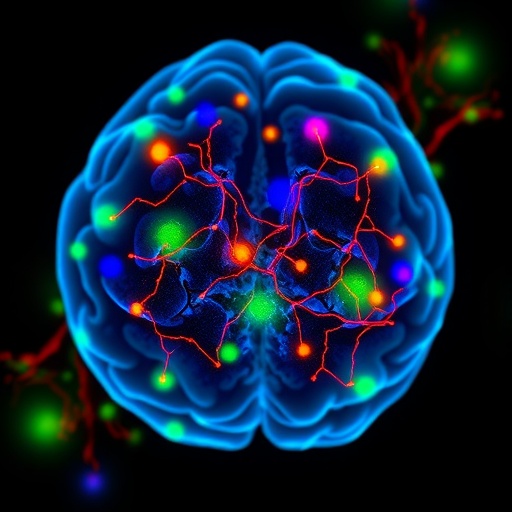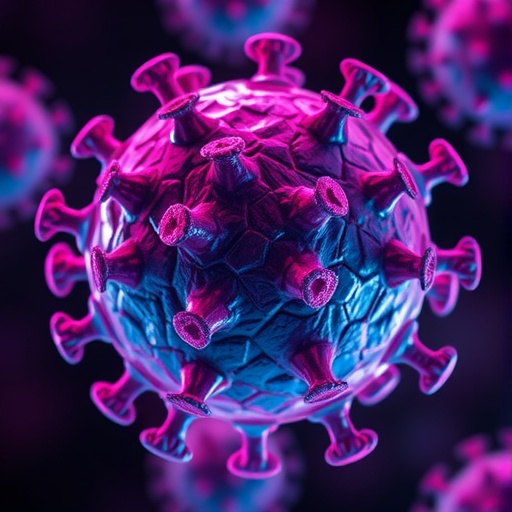In the relentless fight against glioblastoma, the most common and lethal form of primary brain cancer, new research is shedding light on a previously hidden collaborator within the tumor microenvironment—astrocytes. These star-shaped glial cells, traditionally known for their supportive roles in the central nervous system, have now been implicated in actively orchestrating immune evasion strategies that allow glioblastomas to thrive despite aggressive treatments. Groundbreaking work led by Faust Akl and colleagues unravels a complex molecular dialogue where tumor-derived signals reprogram astrocytes into suppressors of anti-tumor immunity, revealing promising therapeutic avenues that could reshape glioblastoma treatment paradigms.
Glioblastoma is notorious for its aggressive nature and poor prognosis, with patients typically facing dismal survival rates due to rapid tumor recurrence and resistance to existing therapies. A key barrier to effective treatment lies within its immunosuppressive tumor microenvironment, which not only shields malignant cells from the body’s immune surveillance but also dampens the efficacy of emerging immunotherapies. While extensive research has examined immune cells such as T cells and macrophages in glioblastoma, the role of astrocytes in modulating the immune landscape has remained enigmatic—until now.
The study employs a comprehensive, multi-modal approach combining cutting-edge single-cell and bulk RNA sequencing from clinical glioblastoma samples as well as preclinical models. This high-resolution genetic profiling unveils distinct astrocyte subsets with unique transcriptional signatures linked to immune regulation within the tumor milieu. Crucially, one astrocyte population emerged as a pivotal suppressor of tumor-specific T cell activity, mechanistically engaging in T cell apoptosis through the expression of the death receptor ligand TRAIL (TNF-related apoptosis-inducing ligand).
TRAIL, traditionally known for inducing apoptosis in cancer cells, paradoxically serves here as a weapon used by astrocytes to eliminate T cells that recognize glioblastoma antigens. This undermines the body’s cytotoxic immune response and contributes to immune escape. Delving deeper, the researchers found that glioblastoma cells secrete the cytokine interleukin-11 (IL-11), which in turn activates the STAT3 signaling pathway in astrocytes. This pathway drives TRAIL expression, establishing an immunosuppressive feedback loop that favors tumor persistence and progression.
Critically, the clinical relevance of this astrocyte-STAT3-TRAIL axis was underscored by correlations observed in patient samples. Elevated levels of STAT3 activity and TRAIL expression in astrocytes were associated with shorter times to tumor recurrence and worse overall survival, positioning this molecular circuit as a prognostic marker and potential therapeutic target in glioblastoma. To validate causality, the team employed sophisticated in vivo CRISPR-based gene editing to selectively disrupt IL-11 receptor or TRAIL genes in astrocytes. These genetic perturbations led to prolonged survival in glioblastoma-bearing mice, accompanied by reinvigorated T cell and macrophage responses within the tumor microenvironment.
The therapeutic implications extend beyond genetic editing. Fascinatingly, the research highlights an innovative strategy employing oncolytic herpes simplex virus type 1 (HSV-1) genetically engineered to express a single-chain antibody capable of neutralizing TRAIL within the tumor. Delivery of this viral vector into glioblastoma models not only enhanced survival but also amplified tumor-specific immune responses, effectively turning the immunosuppressive milieu into one favorable for anti-tumor immunity. This highlights the potential of virotherapy combined with immune checkpoint modulation as a novel therapeutic avenue targeting astrocyte-mediated immunosuppression.
Astrocytes have historically been underappreciated in the context of cancer immunology, viewed largely as supportive or passive cells within the central nervous system. This work radically shifts that perspective, demonstrating that glioblastoma-educated astrocytes actively suppress immune clearance by directly inducing apoptosis in tumor-infiltrating lymphocytes. The discovery of IL-11 as the tumor’s molecular trigger of this astrocyte phenotype unveils an intricate cross-talk that hijacks normal brain cells to aid tumor survival.
The STAT3 signaling pathway, already a well-documented player in various cancers, emerges once again as a central hub for orchestrating immune evasion. Its activation in astrocytes bridges tumor-derived signals with downstream expression of immunosuppressive molecules, thereby curtailing the effectiveness of T cell-mediated killing. Targeting this axis could thus yield dual benefits—dismantling the tumor’s protective shield and invigorating host immunity.
Moreover, the findings propel forward the concept of harnessing engineered viruses as precision tools to modulate the tumor microenvironment, shifting it from an immune desert to an immune-activated state. Oncolytic viruses have garnered immense interest for their ability to selectively kill cancer cells and stimulate systemic immune responses; adding the capability to block astrocyte-derived TRAIL extends their utility and could overcome glioblastoma’s notorious resistance.
Future research will need to explore how this astrocyte-mediated immune suppression interacts with other immunomodulatory mechanisms within glioblastoma, including checkpoint molecules and myeloid cell populations. Additionally, unraveling whether similar astrocyte subsets operate in other central nervous system tumors or neurological diseases could pave the way for broader translational applications.
From a clinical standpoint, the identification of astrocytic TRAIL expression and STAT3 activation as biomarkers offers a potential stratification tool for patient prognosis and therapeutic response. Therapies aimed at disrupting the IL-11–STAT3–TRAIL axis could be tailored to patients whose tumors heavily exploit this pathway, bringing personalized medicine closer to fruition in the context of brain cancer.
In conclusion, this seminal study unravels a covert strategy whereby glioblastoma coerces astrocytes to sabotage tumor-specific T cell immunity through a lethal TRAIL-mediated pathway. By decoding this malignant cellular conversation, Faust Akl and colleagues illuminate a promising immunotherapeutic target and demonstrate the powerful synergy of genetic engineering and virotherapy in dismantling glioblastoma’s defenses. As the search for treatments that can outsmart this devastating disease continues, targeting the astrocyte’s dark role may finally tip the balance in favor of immune control and improved patient survival.
Subject of Research: The role of glioblastoma-instructed astrocytes in suppressing tumor-specific T cell immunity through the IL-11–STAT3–TRAIL signaling axis.
Article Title: Glioblastoma-instructed astrocytes suppress tumour-specific T cell immunity.
Article References:
Faust Akl, C., Andersen, B.M., Li, Z. et al. Glioblastoma-instructed astrocytes suppress tumour-specific T cell immunity. Nature (2025). https://doi.org/10.1038/s41586-025-08997-x
Image Credits: AI Generated
Tags: astrocytes as immune suppressorsglioblastoma and astrocyte interactionsglioblastoma treatment challengesimmune evasion in glioblastomaimmunotherapy resistance in glioblastomamolecular dialogue in tumor immunitynew insights into glioblastoma biologyrole of astrocytes in cancer immunologysingle-cell RNA sequencing in cancer researchT cell suppression by astrocytestherapeutic strategies for glioblastomatumor microenvironment in brain cancer





